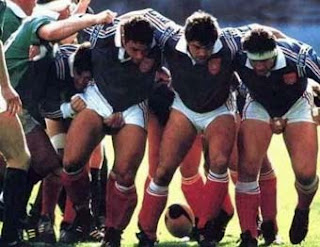
Running a Board meeting...
This is a neat article on how to run a boardmeeting, if it is your first time..remember it is your meeting not the investors, though you have to satisfy there needs, but you have to get the most out of your board as well, make them work for there "kilo" of your flesh.
Over the past 15 years I’ve been to thousands of board meetings. Last week I had four; this week I have two. I’ve spent a lot of time – often during board meetings – thinking about how to make them better and more effective.
Yesterday, Fred Wilson (who was at the Return Path board meeting in Boulder with me) wrote a great post titled Face To Face Board Meetings. Fred and I have been on a number of boards of the years and I strongly agree with his post. To be effective, board meetings need to be (a) in person and (b) there is immense value in a board dinner the night before a board meeting (maybe not every meeting, but at least once a quarter).
While board meetings have a different tempo at different stages of the life of a company, I’ve developed the point of view that the vast majority of the board meeting should be “forward looking.” Ironically (and frustratingly), the general culture of many VC-based boards – especially larger ones – is “backward looking”.
What I mean by this is that most board meetings are 80% status updates, 10% strategy / issues, and 10% administration. I’m fine with the 10% administration, but the 80% / 10% split on status vs. strategy should be reversed. There are plenty of different ways to organize the “strategy” (I’m using “strategy” as shorthand for “forward looking discussion”) and strategy includes a blend of short, medium, and long term issues, as well as plenty of “tactical stuff” (for those that think “strategy” is too specific a word), but I imagine you get the idea.
My favorite board meetings have the following characteristics.
- All board material goes out 48 hours in advance, including a detailed financial package and operating review of the business. This material includes any administrative stuff (draft 409a report, options grants, compensation stuff, audit stuff, prior board meeting minutes.) Everyone reads this in advance – if the materials go out 48 hours in advance there’s no excuse to have not read it.
- There is a dinner the night before that is at least the board and the CEO. Sometimes it includes non-CEO founders; other times it includes various members of the leadership team. This is a casual dinner (e.g. not expensive or full of pomp and circumstance) – a chance for everyone to catch up with each other. If the board meeting is an afternoon meeting, sometimes you can pull off a lunch prior to the meeting that acts as a proxy for the dinner, or a dinner after, although I find the dinner after to be much less helpful.
- The first 30 minutes of the meeting are administrative. Everyone settles down, you go through any formal board business, discuss it, and get it done. Often it takes five minutes (which gives you 25 minutes for the strategy stuff); sometimes it takes the full 30 minutes. I can’t think of a case where it has ever needed to take longer.
- The CEO then puts up one slide summarizing prior period financial performance and asks if anyone has any questions about the board package. This discussion takes however long it takes.
- The CEO then puts up one slide with the issues he’d like to discuss. These are bullet points that are crisp yet detailed enough to know what the issue is. This is then the bulk of the meeting.
Some CEOs are capable of running a 2+ hour discussion off of one slide (I love these guys). Others need slides to prompt them through the setup for each topic (which is fine). Either way, the setup for each topic should be brief (five minutes at most) and the bulk of the activity should be a discussion. The CEO and management team is looking for board feedback, input, advice, and guidance. Ultimately, the CEO has to synthesize this and decide what he wants to do, but by engaging the board in an active discussion, the team will generally get useful input as well as discover where there might be additional domain expertise around the table on the particular issue.
I’ve found that the more time that is spent on #5, the more impactful the meeting is. Obviously, it’s difficult for people on the phone to engage as effectively, which draws them into physically attending the meeting, or not participating.
By Brad Feld , Brad had grown Feld Technologies into one of Boston’s leading software consulting firms prior to the acquisition. He also directed the diversification into software consulting at AmeriData, a $1.5 billion publicly-traded company which was acquired by GE Capital in 1995.
No comments:
Post a Comment